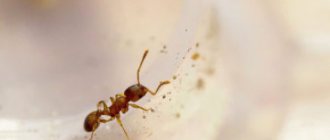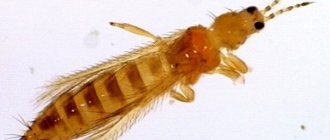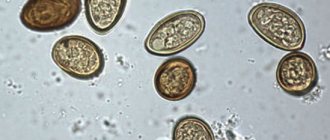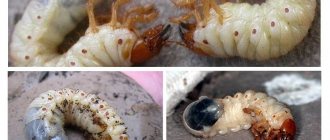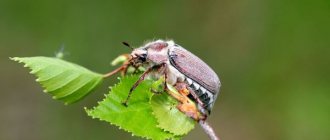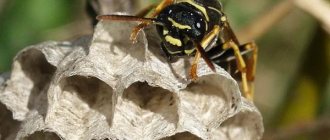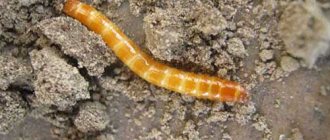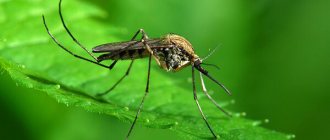Ascariasis is a helminthic disease caused by human roundworms. Ascaris larvae migrate throughout the body, and choose the intestines as their place of development and nutrition. The pathology is accompanied by damage to the gastrointestinal tract, allergic reactions and the possibility of serious complications. Children most often suffer from ascariasis due to non-compliance with hygiene rules.
Ascariasis: what is it?
Ascariasis is a disease from the group of helminthic infestations. People are often infected with roundworms.
Worms of this species look like roundworms. A favorable environment for their development has been created in the small intestine of people. This is where roundworms penetrate.
Neglect of personal hygiene, lack of cleanliness in the home and surrounding areas are the main factors provoking the development of ascariasis.
People introduce infection into their bodies through the mouth:
- eating low-quality and unwashed food;
- touching food with unwashed hands;
- putting dirty hands in your mouth.
Sexually mature individuals are quite large worms. Their length varies from 25 to 50 centimeters. Males are smaller than females.
Externally, parasites look like earthworms. Their body is colored pinkish-white. The small intestine is the usual habitat for adult individuals.
The larvae, picked up by the bloodstream, migrate throughout the organs. They get into the heart, liver and lungs.
From the respiratory tract, when coughing, the larvae enter the mouth.
Swallowed with sputum, the larvae return from the oral cavity to the gastrointestinal tract and settle on the walls of the small intestines.
In the loops of the small intestine, the larvae develop into adult roundworms. The life cycle of parasites closes, and a new round of helminth development begins.
Ascaris can be eliminated with the help of antiparasitic drugs.
At the same time, it is important to know how roundworms come out and whether the treatment was successful.
Who are roundworms?
Ascaris is one of the largest parasitic worms; it belongs to the Roundworm type.
Within 2.5-3 months, the female reaches a length of 24-44 cm. She has an elongated tail end, equipped with a conical appendage and two large papillae (suction cups) on the inside of the body. Males reach a length of 15-25 cm.
The tail end of the male is curved in the form of a hook. At the head end there is a mouth opening surrounded by three large cuticular lips (suction cups). Fertilized oval-shaped eggs have a size of 0.04-0.05 mm. Inside the egg is a dark germ cell. Unfertilized eggs are larger and filled with light yolk cells.
Regardless of the presence of males, the female lays up to 200 thousand (!) eggs, fertilized or unfertilized, in the intestine every day. The eggs are released into the soil through human feces.
Eggs can survive in soil for up to 20 years or more. At high humidity, larvae develop in them to the stage of invasiveness (the ability to penetrate and develop in humans), which corresponds to an age from 24 days to several months.
The disease caused by roundworms is called ascariasis. The average incidence of the disease in the world population is about 100 million cases per year. The main mechanism of infection is fecal-oral, through the ingestion of eggs with unwashed vegetables and fruits, as well as other food (through unwashed hands). Flies also contribute to the contamination of food products to a certain extent.
How do roundworms leave the body?
Photo of how roundworms come out after treatment
After taking the appropriate medication, in most cases, the worms leave the body naturally: by defecating in feces. It is not always possible to see worms in feces.
The appearance of stool does not allow one to judge the success of treatment, even if roundworms are noticed there.
Control tests prescribed after the course of treatment help to find out how successful drug therapy has been.
Antiparasitic drugs disrupt metabolic processes in the body of roundworms and lead to muscle paralysis.
Impaired metabolism and paralysis kill helminths.
Helminthiasis and the use of antihelminthic drugs change the usual consistency of stool.
Metabolic products of helminths, the remains of their bodies, sometimes leave the body in the form of mucus, which is found in feces.
The process of worms leaving the body is accompanied by flatulence and indigestion.
How helminths leave the body after drug therapy
In the photo: roundworms emerge after treatment.
Medicines begin to influence the parasites after different periods of time.
Many drugs do not immediately kill helminths. The release of worms occurs gradually.
Intoxication leads to paralysis. The release of roundworms begins when the concentration of active substances reaches a maximum.
During this period, medications actively destroy helminths. The exposure time can be found by reading the instructions for the drug used.
After Pirantel, roundworms leave the body after 24 hours. The medication leads to paralysis of the muscles of parasitic worms.
The medicine is drunk in the morning. The next day, in the morning, cleansing the intestines of helminths begins.
Decaris and Wormix work the same way every other day.
Penetration of larvae into organs
Liver
First, the parasite eggs enter the intestines. Following this, the larvae develop, hatch and penetrate the intestinal wall. After this, the larvae continue to be absorbed into the body, enter the blood vessels, and then the liver. This migration process takes from 2 to 8 days, after which the disease develops more intensively.
Internal organs
Worms after the liver continue to penetrate other organs. They move through the blood vessels directly to the heart. After the heart, the worms penetrate into the lungs. After 1-2 weeks, roundworms migrate again. Now comes the turn of the bronchi. Parasites migrate throughout the body until they reach the throat. The person swallows them again, the larvae enter the intestines, and migration begins in a new circle. When roundworms enter the intestines, they undergo modification. They become adults and begin to reproduce intensively.
Do parasites come out on their own?
In the photo: how roundworms come out after treatment.
Some patients, tormented by the question: can roundworms killed with medications leave the body on their own, use laxatives and do enemas.
Manipulations that promote bowel movement should not be performed without the advice of a doctor. Roundworms freely leave the intestines without additional measures.
There are antiparasitic medications, after taking which you need to drink a laxative.
When prescribing them, the doctor also prescribes medications with a laxative effect. The doctor gives recommendations on how to use these medications.
Thus, the use of Pirantel does not require taking additional medications.
It is useless to give enemas after taking anthelmintic drugs. Roundworms inhabit the small intestines; the enema solution does not penetrate there.
You need to be patient and wait for the dead roundworms to come out naturally.
In addition, soda-salt enemas disrupt the intestinal microflora, harm the mucous membranes, and complicate treatment.
Analysis of stool for roundworms in children and adults
It is quite difficult to detect roundworms (large white roundworms up to 40 cm long) in the feces of an adult or child. And all because adult individuals, unlike pinworms, are parasitic and lay their eggs in the lumen of the small intestine (pinworms crawl out through the rectum to lay offspring and lay eggs around the anus). With ascariasis, only eggs come out with the feces (pictured). It’s not difficult to talk about what they look like. Ascaris eggs are oval in shape, covered on the outside with a brown shell of a protein structure, protected from mechanical damage by three more glossy layers. The length of the oval egg is 0.07 mm. There is an embryo inside; certain conditions are necessary for its maturation and development.
Adult roundworms (pictured) can be found in the feces of children and adult patients in extremely rare cases. Studying the life cycle of helminths helps to understand why. Invasive eggs enter the body from the outside along with dirty food or dirty hands. During the first five days after infection, larvae migrate throughout all internal systems. In the first days they feed on their own biological resources, then on particles of human blood. The migration phase lasts about three months. During this time, the larvae settle, those that enter the small intestine grow to adulthood. Females mate with males, after sexual intercourse the males die and come out dead along with the feces. But even in this case, it is quite difficult to see the roundworm on your own without a microscope. And all because the worms, once they enter the large intestine, are digested or dismembered. Only their fragments may end up in the feces. An uninitiated person does not know what they look like, so he will not be able to distinguish a digested worm from the contents of the intestines.
When can you see live and dead roundworms in stool?
It is possible to see live and dead roundworms in the feces of children and adults only during treatment of ascariasis with anthelmintic drugs. The photo shows what it looks like. Modern remedies have different effects on worms. Some cause paralysis of worms; in case of large accumulations, they come out entirely along with the feces. Visually they look like strings with a dense round body. The color of the body indicates the viability of the worms. If it is whitish in color, it means that there is a live roundworm in the feces; if the threads are black (in the photo), it means that the parasite has already died.
Knowing what human roundworms look like, you can try to seek help from specialists in time and prevent the formation of possible complications in children and adults.
An example of one of them is clearly shown in the photo. It is also necessary to start sounding the alarm when live and dead roundworms are not found in feces, but a child or adult complains of the appearance of characteristic symptoms. This may be general weakness, decreased usual activity, sudden changes in mood, irritability, muscle pain. You should start worrying if skin rashes, pain in the abdomen or right hypochondrium, nausea, dry cough and shortness of breath appear against the background of illness. A characteristic symptom of ascariasis is a wave-like change from one symptom to another. If several indicated manifestations are detected, you should immediately visit a parasitologist or infectious disease specialist and take a stool test for ascariasis. This procedure is quite simple.
How to take a stool test for ascariasis?
No special preparation is required. But some recommendations will have to be taken into account:
- Before collecting stool for ascariasis, both children and adults need to go to the toilet and urinate.
- Then you need to take a clean, dry container (pharmacies sell special plastic containers designed for collecting feces, as they look like in the photo). If you don't have any on hand, any empty bottle with a lid will do.
- To determine ascariasis, it is necessary to place a volume of material equal to two teaspoons in a container.
- It is necessary to take samples from different sides of the feces (side, bottom, inside).
- After immersion in the container, the material is tightly closed with a lid.
- It is important to stick a piece of paper on the container with the inscription of the last name, first name and date of collection of the analysis.
In order to make an accurate analysis of stool, the material cannot be stored in a container for a long time (ideally, the time difference between collection and laboratory examination should be no more than 45 minutes). If necessary, you can delay the time for five to six hours, but for this it is best to put the feces in the refrigerator.
zhkt.guru>
Do roundworms come out through the mouth?
Mature roundworms are not able to exit through the mouth. But their larvae, coursing through the body, penetrate through the respiratory organs into the pharynx. During treatment, they fall into the mouth when coughing.
The mucus produced by coughing must be expectorated. If it is swallowed, the larvae descend into the intestines, so re-infection may occur. Drug therapy turns out to be ineffective.
Some medications cause adverse reactions: nausea and vomiting. But this does not mean that helminths will be able to leave the body through the mouth.
- Although there have been recorded cases of roundworms being released in vomit.
This phenomenon occurs after using Nemozol, Praziquantel, Vermox.
Knowing about the undesirable consequences of using these medications, doctors do not prescribe them to children.
They also do not treat an adult patient with poor health.
If treatment was carried out with Piperazine, Pirantel and Dekaris, the parasites are eliminated through the intestines.
What to do when killed worms come out with vomiting?
It is forbidden to come into open contact with helminths.
Vomiting containing worms must be disposed of immediately. It is washed down the drain, and the sink or toilet is washed with disinfectants.
Harmful substances accumulated in the body during the period of infection with helminths are excreted in the urine. Cleansing of toxins occurs unnoticed by people.
The fact that the released helminth can be noticeable in the feces causes confusion among people.
But this does not happen every time parasites come out. It all depends on the severity of the disease and the degree of infection.
Where do roundworm worms live?
Many people believe that worms settle in the digestive tract, but, unfortunately, this is not entirely true. From here they just begin their development, and as a result, their larvae begin to migrate throughout the body, settling in other, no less important organs:
The small intestine is the most favorite place for roundworms because this place satisfies all the conditions for their comfortable living. It is from here that the life path of one larva begins, which gave birth to offspring who remained to live here. Another reason why roundworms like to live in the intestines is the convenience of the female crawling out of the rectum in order to lay eggs and continue to spread, only in other organisms.
A special feature of helminths - roundworms - is that they live without being attached to the walls of the intestines or other organs, unlike other types of parasites. Many of the worms have suckers or even teeth, which firmly cling to the intestinal lining and cause ulcers.
Ascaris is able to pass feces inside the intestines without leaving them outside, so you won’t notice such a parasite when visiting the toilet. However, if you suddenly notice a worm in the bowel movements - an roundworm, this indicates its death.
Drugs that kill roundworms
Ascariasis is treated with medications that can block the transmission of impulses in parasites.
Paralyzed parasites are unable to live. They fall off the mucous membranes and come out without changing their appearance.
If the dosage is violated, the helminths may come out having undergone changes. In feces, not whole bodies of worms are found, but their fragments.
Sometimes the parasites have time to digest before leaving. This happens when dead worms linger in the intestines for a long time.
The appearance of emerging helminths is affected by:
- incorrect dosage;
- improper functioning of the intestines (weak peristalsis);
- an incredible amount of helminths (the intestines are literally clogged with them);
- consumption during treatment of food that creates a favorable environment for the life of parasites;
- rate of breakdown of anthelmintic drugs.
Drugs that kill roundworms have various antiparasitic effects.
When using some, the process of digestion of glucose, the main nutrient of parasites, is disrupted.
These medications lead to the rapid death of worms. Dead individuals are excreted in the feces.
Other medications (for example, albendazole) cause disruption of biochemical processes in parasites, which leads to rapid death of the worms.
If roundworms are not passed through the feces after 24 hours, your doctor may prescribe a laxative or prescribe a cleansing enema.
Precautionary measures
If roundworm or several parasites are released, safety precautions must be observed.
To prevent re-infection:
- wash their hands with soap after each act of defecation;
- change bed linen 2 times a day;
- underwear is changed 2 times a day, washed thoroughly, ironed with a hot iron;
- All clothes are worn after ironing.
It is important not to prolong the course of ascariasis and not to prescribe treatment for yourself and your loved ones on your own.
Targeted therapy eliminates ascariasis in a matter of days.
Prevention and hygiene protect against infection with worms.

